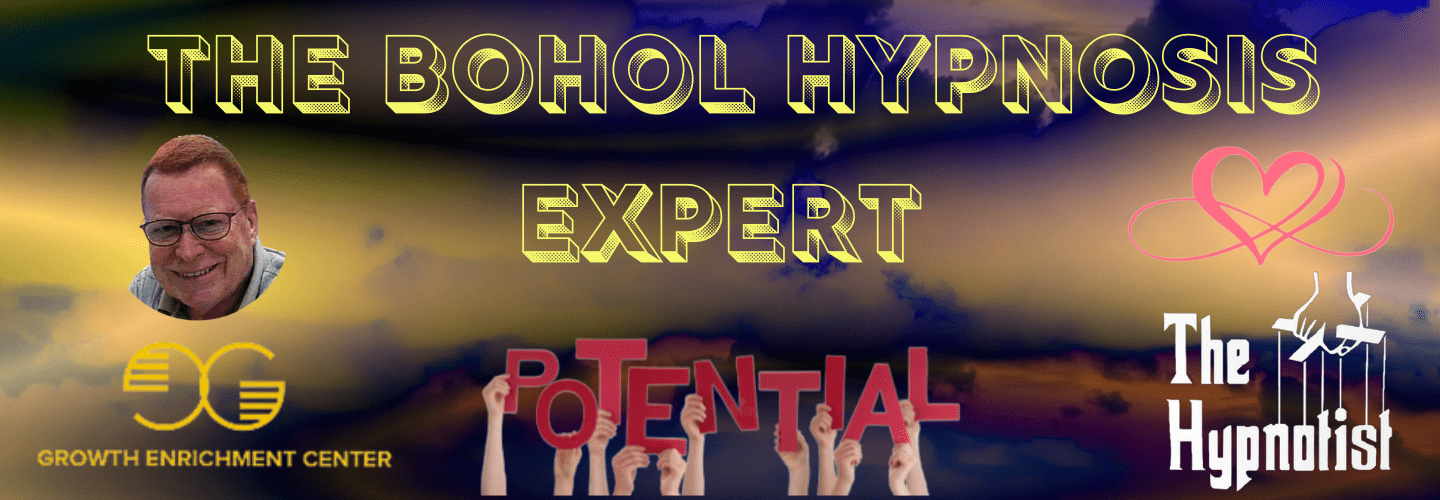
Incorporating hypnosis, EFT, and NLP techniques can effectively alleviate the fear of falling asleep while driving. Hypnosis targets driving anxieties in the subconscious. EFT tapping releases emotional blockages and reduces fear intensity. NLP reframes thought patterns, empowering fear overcoming. Techniques like deep breathing, visualization, and affirmations help manage sleep phobia. Understanding triggers and subconscious patterns is essential in overcoming fear. Combining these approaches enhances positive driving affirmations. Maintaining safe driving habits and stress management are key. Explore how these therapies can assist in resolving your fear of falling asleep while driving.
Understanding the Fear of Falling Asleep
In exploring the fear of falling asleep while driving, it is important to understand the underlying factors that contribute to this alarming concern. Sleep anxiety and driving fears are two significant components that often merge to create a potent fear of falling asleep at the wheel. Sleep anxiety, characterized by a persistent worry about the quality and duration of sleep, can lead to excessive daytime drowsiness, making it challenging to stay awake while driving. On the other hand, driving fears encompass a range of anxieties related to being on the road, including the fear of accidents or losing control of the vehicle.
Individuals experiencing the fear of falling asleep while driving may find themselves caught in a distressing cycle of worry and apprehension. This fear can have a big impact on their daily lives, causing increased stress levels and avoidance of driving situations. Recognizing and addressing these underlying sleep anxiety and driving fears is important in effectively managing and overcoming the fear of falling asleep while driving. By identifying these factors, individuals can work towards developing coping strategies and seeking appropriate interventions to ensure their safety on the road.
Benefits of Hypnosis for Driving Anxiety

For individuals struggling with driving anxiety, hypnosis offers a valuable tool in promoting driving safety and managing fear.
Incorporating Neuro-Linguistic Programming (NLP) techniques can further enhance the effectiveness of hypnosis in addressing anxiety related to driving.
Hypnosis for Driving Safety
Amidst the myriad strategies available to alleviate driving anxiety, hypnosis emerges as a promising tool for enhancing driving safety by addressing underlying fears and promoting a sense of calm behind the wheel.
Through hypnosis, individuals can effectively manage their sleep patterns, ensuring they are well-rested before driving and reducing the risk of fatigue-related accidents. Additionally, hypnosis can instill confidence in drivers, helping them navigate challenging driving situations with a clear and focused mind.
By targeting the root causes of driving anxiety, such as fear of falling asleep while driving, hypnosis equips individuals with the mental tools needed to stay alert and responsive on the road.
Ultimately, hypnosis promotes safe driving practices by fostering a state of relaxation and awareness essential for peak driving safety.
NLP Techniques for Anxiety
Utilizing NLP techniques can effectively complement hypnosis in addressing driving anxiety by offering individuals practical tools to manage their emotions and enhance their driving confidence.
NLP, focusing on patterns of behavior and thought, provides strategies for anxiety management and stress reduction specifically tailored to driving situations. Techniques such as anchoring positive emotions, reframing negative thoughts about driving, and visualization of successful driving experiences can help individuals build resilience against anxiety triggers on the road.
Exploring Emotional Freedom Technique (EFT)

Exploring the Emotional Freedom Technique (EFT) can provide individuals with a powerful tool to address their fear of falling asleep while driving. EFT tapping, a key component of this technique, involves gently tapping on specific meridian points on the body while focusing on the fear or phobia at hand. This process aims to release emotional energy blockages, promoting a sense of calm and relaxation.
During EFT tapping sessions, individuals are encouraged to acknowledge their fear of falling asleep while driving and express any associated emotions. This pivotal release is important in EFT as it allows individuals to confront and process their fears in a safe and controlled manner. By tapping on acupressure points, the body's energy flow is believed to be restored, helping individuals to reframe their thoughts and emotions surrounding the fear.
Through consistent practice of EFT tapping, individuals may experience a reduction in the intensity of their fear, leading to a greater sense of ease and confidence while driving. This technique can serve as a valuable self-help tool for those looking to overcome their fear of falling asleep behind the wheel.
Techniques for Overcoming Sleep Phobia

Overcoming sleep phobia can be a challenging journey, but there are effective techniques that can help ease your fears.
By incorporating relaxation techniques such as deep breathing or progressive muscle relaxation, you can calm your mind and body before bedtime.
Additionally, practicing positive visualization exercises can shift your focus away from fear and towards feelings of safety and security.
Effective Relaxation Techniques
In coping with the fear of falling asleep while driving, mastering effective relaxation techniques is essential for managing sleep phobia and ensuring safety on the road.
Progressive relaxation, a method involving tensing and then relaxing each muscle group in the body, can help alleviate physical tension and promote a sense of calm.
Deep breathing techniques, focusing on slow, deep breaths to activate the body's relaxation response, are also beneficial in reducing anxiety and promoting tranquility.
By incorporating these techniques into a daily routine, individuals can cultivate a sense of inner peace and relaxation, which can be particularly helpful in overcoming the fear of falling asleep while driving.
Practice and consistency are key in harnessing the power of these relaxation methods to combat sleep phobia effectively.
Positive Visualization Exercises
To address the fear of falling asleep while driving and enhance relaxation techniques, incorporating positive visualization exercises can be a vital tool in overcoming sleep phobia and promoting a sense of safety and calm on the road. Visual imagery plays an essential role in connecting the mind and body, allowing individuals to visualize themselves driving peacefully and alert.
This technique establishes a mind-body connection that can help reduce anxiety and fear associated with falling asleep behind the wheel. By incorporating meditation into these visualization exercises, individuals can further deepen their relaxation response, creating a state of heightened awareness and focus while driving.
Practicing these positive visualization exercises regularly can reprogram the mind to associate driving with feelings of tranquility and security, ultimately overcoming the fear of falling asleep while on the road.
The Role of Neuro-Linguistic Programming (NLP)

Amidst the challenges of fear and anxiety when driving, Neuro-Linguistic Programming (NLP) emerges as a powerful tool for addressing and resolving the fear of falling asleep behind the wheel. NLP strategies focus on the mind-body connection, working to reframe thought patterns and behaviors that contribute to the fear of falling asleep while driving.
NLP techniques can help individuals recognize and change the subconscious beliefs and triggers that lead to this fear. By utilizing techniques such as anchoring positive emotions, reframing negative thoughts, and visualizing successful driving experiences, individuals can reprogram their minds to feel more confident and secure while on the road.
Through NLP interventions, individuals can learn to better understand their thought processes, emotions, and behaviors related to driving. By establishing new neural pathways and responses, NLP empowers individuals to overcome their fear of falling asleep while driving and cultivate a sense of control and safety behind the wheel.
Addressing Subconscious Patterns and Triggers

How can individuals effectively identify and address the subconscious patterns and triggers contributing to the fear of falling asleep while driving?
Subconscious programming plays a significant role in shaping our behaviors and responses, often without our conscious awareness. When it comes to the fear of falling asleep while driving, understanding these underlying subconscious patterns is essential for effective resolution. To begin this process, individuals can engage in self-reflection or seek the support of a qualified therapist specializing in subconscious reprogramming techniques such as hypnotherapy, EFT (Emotional Freedom Techniques), or NLP (Neuro-Linguistic Programming).
Trigger identification is another vital aspect of addressing the fear of falling asleep while driving. Triggers can be internal thoughts, external situations, or past experiences that activate the subconscious patterns leading to this fear. By becoming aware of these triggers, individuals can develop strategies to manage and overcome them. Techniques such as journaling, mindfulness practices, and guided visualization can aid in pinpointing specific triggers and working towards desensitizing their impact on driving-related fears.
Creating Positive Driving Affirmations

In building resilience against the fear of falling asleep while driving, crafting positive driving affirmations can be a powerful tool to rewire subconscious beliefs and enhance driving confidence.
Mindful driving begins with fostering a positive mindset through affirmations that promote safety, alertness, and focus on the road ahead.
Sleep affirmations, such as 'I am fully alert and focused while driving,' or 'My eyes are wide open and attentive to the road,' can help reprogram the mind to associate driving with wakefulness and attentiveness rather than fear and drowsiness.
Combining Hypnosis, EFT, and NLP Practices

To further enhance the effectiveness of positive driving affirmations in overcoming the fear of falling asleep while driving, integrating hypnosis, EFT (Emotional Freedom Techniques), and NLP (Neuro-Linguistic Programming) practices can offer a thorough approach to reprogramming the subconscious mind and promoting safe and alert driving habits. These techniques work on the principle of the mind-body connection, recognizing that mental patterns and beliefs can appreciably impact our physical behaviors and responses.
Hypnosis can help access the subconscious mind to identify and address deep-seated fears or traumas related to driving. EFT, known as tapping, involves stimulating energy meridian points on the body to reduce stress and anxiety associated with driving. NLP techniques focus on language patterns and behaviors to reframe limiting beliefs and promote positive thought patterns.
Maintaining Safe Driving Habits

To guarantee safe driving practices, consistently monitoring one's attentiveness and adhering to traffic regulations is paramount for minimizing risks on the road. Driving mindfulness plays a vital role in staying focused and alert while behind the wheel. It involves being fully present, avoiding distractions, and maintaining awareness of the surroundings. Additionally, practicing good sleep hygiene is essential for preventing drowsy driving. Ensuring an adequate amount of quality sleep each night can greatly reduce the chances of nodding off while driving.
Stress management is another key aspect of maintaining safe driving habits. High-stress levels can impair decision-making abilities and reaction times, increasing the likelihood of accidents. Techniques such as deep breathing, listening to calming music, or taking short breaks during long drives can help alleviate stress and promote a sense of relaxation.
Furthermore, fatigue prevention is critical for road safety. Drivers should prioritize getting enough rest before starting on a journey, take regular breaks during extended trips, and avoid driving during times when they would typically be asleep. By incorporating these practices into their routine, drivers can enhance their safety on the road and reduce the risk of accidents.
Frequently Asked Questions
Can Hypnosis, Eft, and NLP Be Used to Address Other Driving Anxieties or Phobias Besides Falling Asleep While Driving?
Addressing driving anxieties like road rage, stress, traffic, and accidents can be effectively managed through therapeutic interventions. Techniques such as hypnosis, EFT, and NLP provide valuable tools to help individuals overcome these challenges and drive with confidence.
How Long Does It Typically Take to See Results When Using Hypnosis, Eft, and NLP for Overcoming the Fear of Falling Asleep While Driving?
The success timeline for overcoming the fear of falling asleep while driving varies based on individual factors. Common challenges include underlying causes and commitment level. Personal experiences indicate results can be seen in weeks to months with consistent practice and professional guidance.
Are There Any Potential Side Effects or Risks Associated With Using Hypnosis, Eft, or NLP for Driving Anxiety?
While exploring techniques for driving anxiety, it's essential to contemplate potential risks. Understanding the effectiveness of these methods is key. Empathically maneuvering potential side effects guarantees a balanced approach to addressing fears and phobias, fostering a safer driving experience.
Can These Techniques Be Used in Conjunction With Traditional Therapy or Medication for Driving Anxiety?
Exploring alternatives to address driving anxiety can involve combining approaches such as traditional therapy or medication with complementary techniques like hypnosis, EFT, or NLP. This integrated approach may offer a thorough strategy for managing this issue effectively.
Is It Possible to Learn and Practice These Techniques on Your Own, or Is It Recommended to Seek Guidance From a Trained Professional?
Learning and practicing techniques independently is possible, yet seeking guidance from a trained professional is recommended for best results. Self-practice can be beneficial, but a professional can provide personalized support, feedback, and guarantee proper application of the methods.
Conclusion
To sum up, the fear of falling asleep while driving can be effectively addressed through the use of hypnosis, EFT, and NLP techniques.
By exploring and understanding the underlying emotions and triggers, individuals can create positive driving affirmations and maintain safe driving habits.
Just like a well-oiled machine requires regular maintenance to function smoothly, our minds and emotions also need care and attention to operate at their best on the road of life.
Take the Next Step
Do not be afraid to reach out to me, Mark E Wilkins, to assist you in any issues you might have. Most Hypnotherapy sessions last 2 hours and EFT Sessions are usually handled with one session. Life Coaching is 45 minute session, once a week. Self-Hypnosis is taught in one session, and lasts a lifetime.
To make an appointment, first listen to the Pre-talk and fill out he Complementary Healthcare Provider Disclosure. The use the Contact Form to request an appointment with the Bohol Hypnosis Expert.
Self-help downloads are available. The self-hypnosis program to teach you how to self-hypnotize is here.





